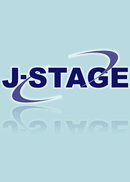All issues

Volume 6 (1996 - 1997・・・
- Issue 4 Pages 1-
- Issue 3 Pages 1-
- Issue 2 Pages 1-
- Issue 1 Pages 1-
Volume 6, Issue 2
Displaying 1-4 of 4 articles from this issue
- |<
- <
- 1
- >
- >|
-
Kyoko Ogawa, Shiro Fujino1996 Volume 6 Issue 2 Pages 1-15
Published: July 05, 1996
Released on J-STAGE: November 27, 2012
JOURNAL FREE ACCESSWith the rapid increase of the number of elderly and the rise in health care expenditures, it has become an important issue to allocate scarce resources to the health care sector rationally. Since the elderly tends to consume greater health care resources than the young, the cost of a chronic disease that occurs with aging should be carefully analyzed.
The aim o f this article is to estimate the cost-of-illness of osteoporosis in Japan. Osteoporosis occurs with aging, especially in post-menopausal women, and with it a growing risk of bone fracture to the population.
Though osteoporosis is a well known diseas e, diagnosis and treatment of the disease were not developed until recently. New devices like DAX and new blood examinations for detecting osteoporosis accurately are progressing as well as new disease altering treatments. Even the criteria for defining the disease is changing. As a consequence, data sources are limited. Statistical estimates rely on rough figures such as the number of bed-ridden patients with hip fractures and on assumptions such as bone fractures, in particular, femur fractures are relied upon because of the lack of data availability.
The model assumes stat e s of patients suffering from osteoporosis as follows: (1) patients with osteoporosis SO, (2) no treatment S1, (3) patients with drug therapy S2, (4) bone fracture (femur fracture) S3, (5) bed-ridden S4. Care for patients is given as follows: (1) home care, (2) hospitalization and (3) nursing home care.
The direct costs and indirect costs of osteoporosis are estimated in 1992 in Japan. The direct costs amount to \1.3102 trillion, and indirect costs are \ 187.2billion, totaling \1.4974 trillion. The share of direct costs of osteoporosis to national health care costs is 6%. The ratio of indirect to direct costs is 14%, and this figure is far less than the one we thought before the analysis began. With increasing information on osteoporosis more accurate estimates on the cost-of-illness of the disease can be made in the future. Nonetheless, we are able to conclude that prevention is the best therapy for osteoporosis.View full abstractDownload PDF (3278K) -
Cost, Return, and the Value: Method and Empirical ResultsTomofumi Anegawa1996 Volume 6 Issue 2 Pages 16-58
Published: July 05, 1996
Released on J-STAGE: November 27, 2012
JOURNAL FREE ACCESSThis paper investigates the return of R&D investment of pharmaceutical firms. First, this study surveys the previous studies of the cost and return of R&D of U. S. pharmaceutical firms. The methods and results of these studies are discussed. Second, this study examines the application of the present value method to the R&D activities of Japanese pharmaceutical firms. Due to unstable estimates in the cost of capital and the lack of detailed sales data on individual drugs, these factors hamper empirical studies. Third, I propose the valuation of the firm by relying on the financial practice. This study shows the significant differences between market value and the fundamental value of the firm.View full abstractDownload PDF (8660K) -
Ichiro Innami1996 Volume 6 Issue 2 Pages 59-75
Published: July 05, 1996
Released on J-STAGE: November 27, 2012
JOURNAL FREE ACCESSWhy has the Japanese pharmaceutical industry failed to acquire international competitiveness? To answer this question, this paper proposes two non-mutually exclusive hypotheses: disincentives (a sizable domestic market, aregulation dependent industry nature, quantity maximization firm behavior, discouraging drug price systems) and impossibilities (immature basic science, low productivity of research institutes, poor information infrastructure). Thus four possible policy options, namely, health care policy, science and technology policy, information policy and industrial policy, are discussed with their specific means and implications for patients, the health care system, and the national economy.View full abstractDownload PDF (4162K) -
A Study of Drug Development in Biotechnology?Liisa Välikangas1996 Volume 6 Issue 2 Pages 76-119
Published: July 05, 1996
Released on J-STAGE: November 27, 2012
JOURNAL FREE ACCESSThe research report, called“Learning from (In) Experience in an IndustryA Study of Drug Development in Biotechnology”, is a diverse treatment of issues related to organizational learning in the context of the emerging biotechnology industry. In particular, drug development of biotechnology companies is considered for the lessons learnt.
After a broa d discussion on theories of learning, key issues in drug development are considered in terms of the search for innovation. Balancing the need to exploit current competences and develop new ones is one of the strategic issues reflected. Secondly, the report addresses the learning potential of failures in drug development and points to the ways in which frequent failures in biotechnology drug development have contributed to the diffusion of knowledge in the industry. Examples are presented. Some stumbling blocks are also considered that prevent companies from learning from their own experience.
Finally, the report considers how com p anies structure uncertainty in an effort to commit fully to a particular strategy. This may be often to raise funding. As such precommitments may be counterproductive in a business environment that is changing fast, strategies for adding flexibility are discussed. The question of the value of persistence is raised for organizational learning.
Success in an emerging industry may often d e pend on luck, serendipidity, and early events that spin the company into a path difficult to catch up for others. The report ends by considering strategic tensions that are productive in rendering such success paths.View full abstractDownload PDF (10761K)
- |<
- <
- 1
- >
- >|